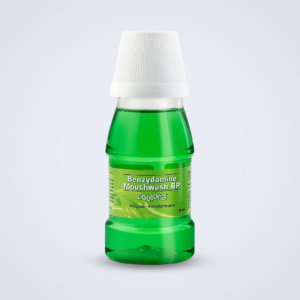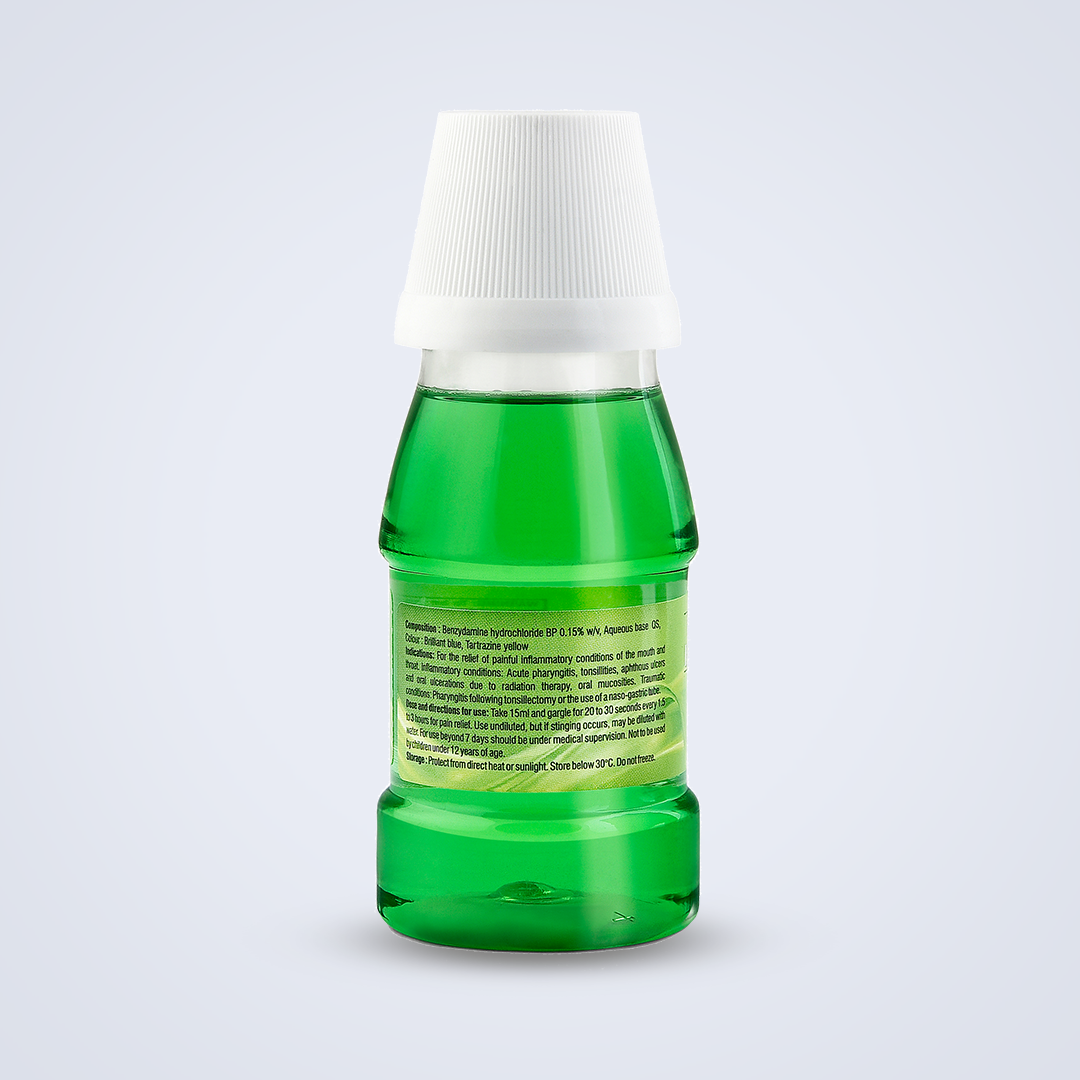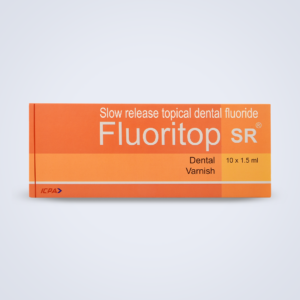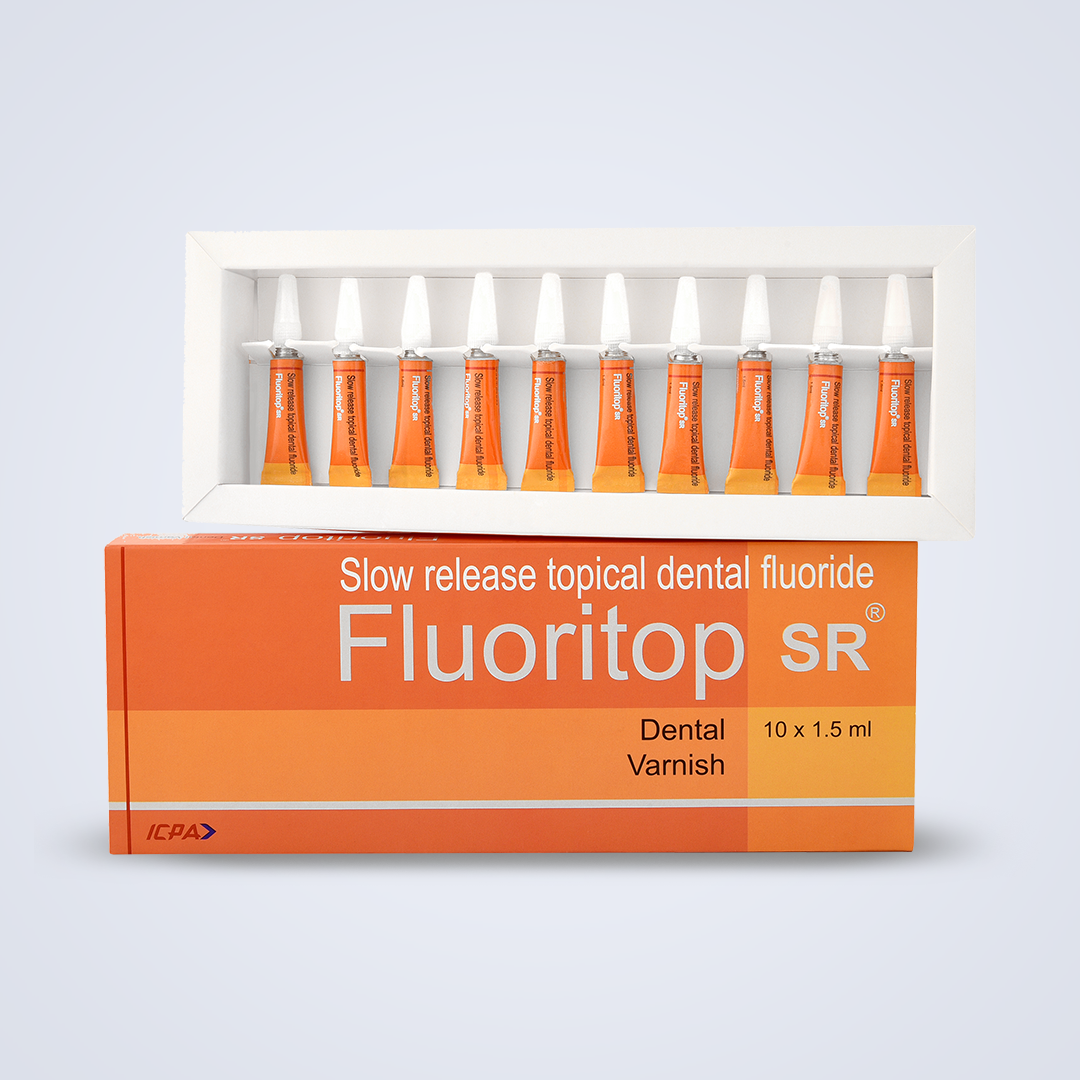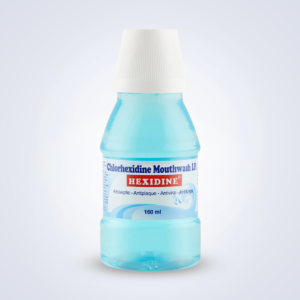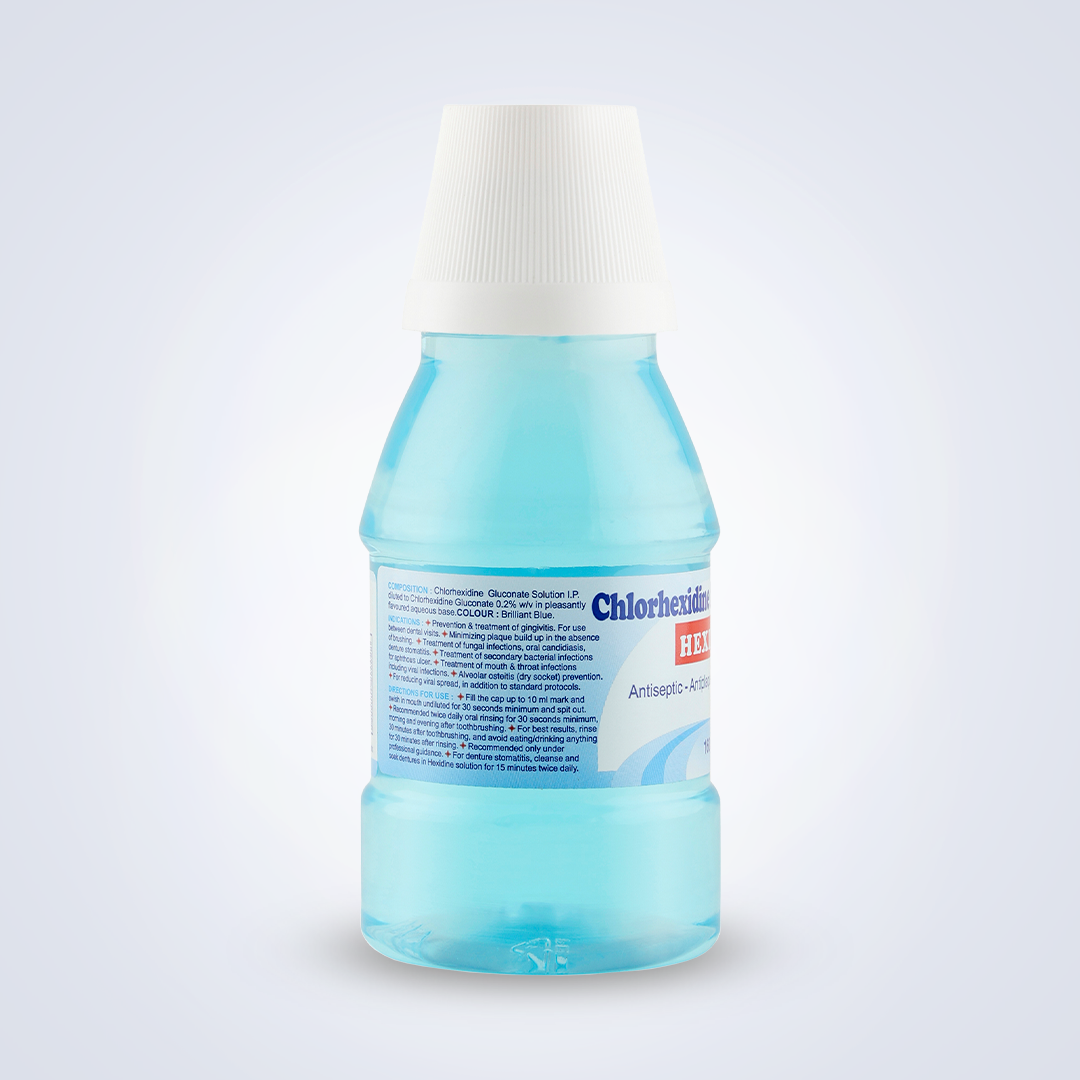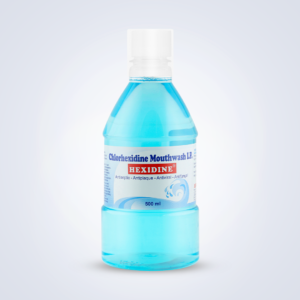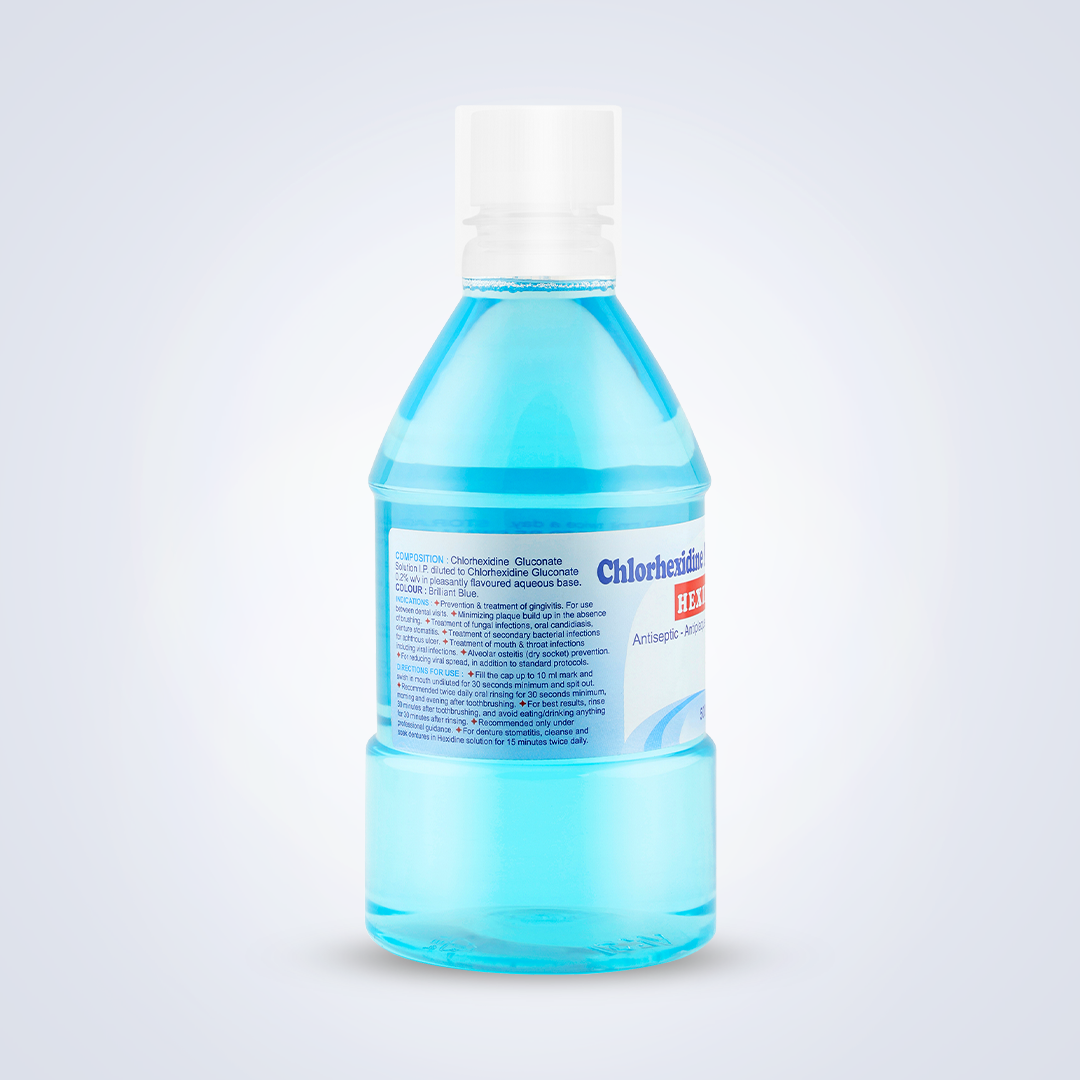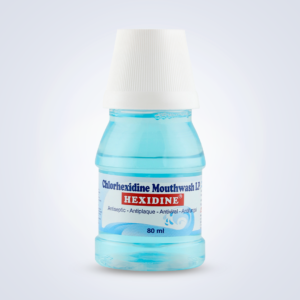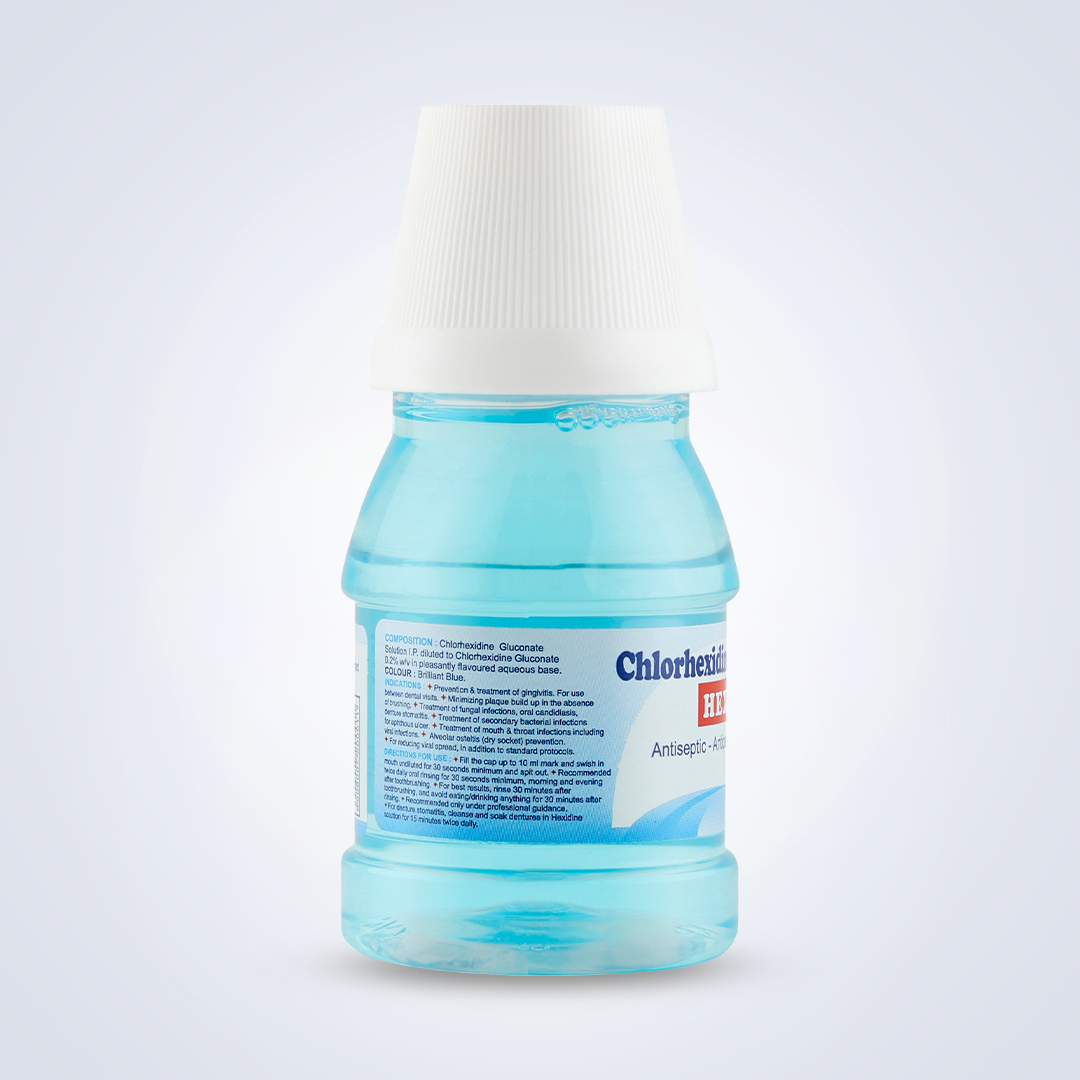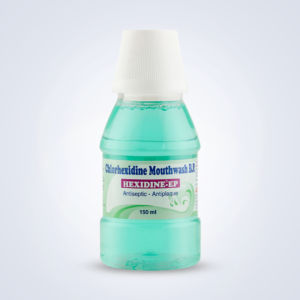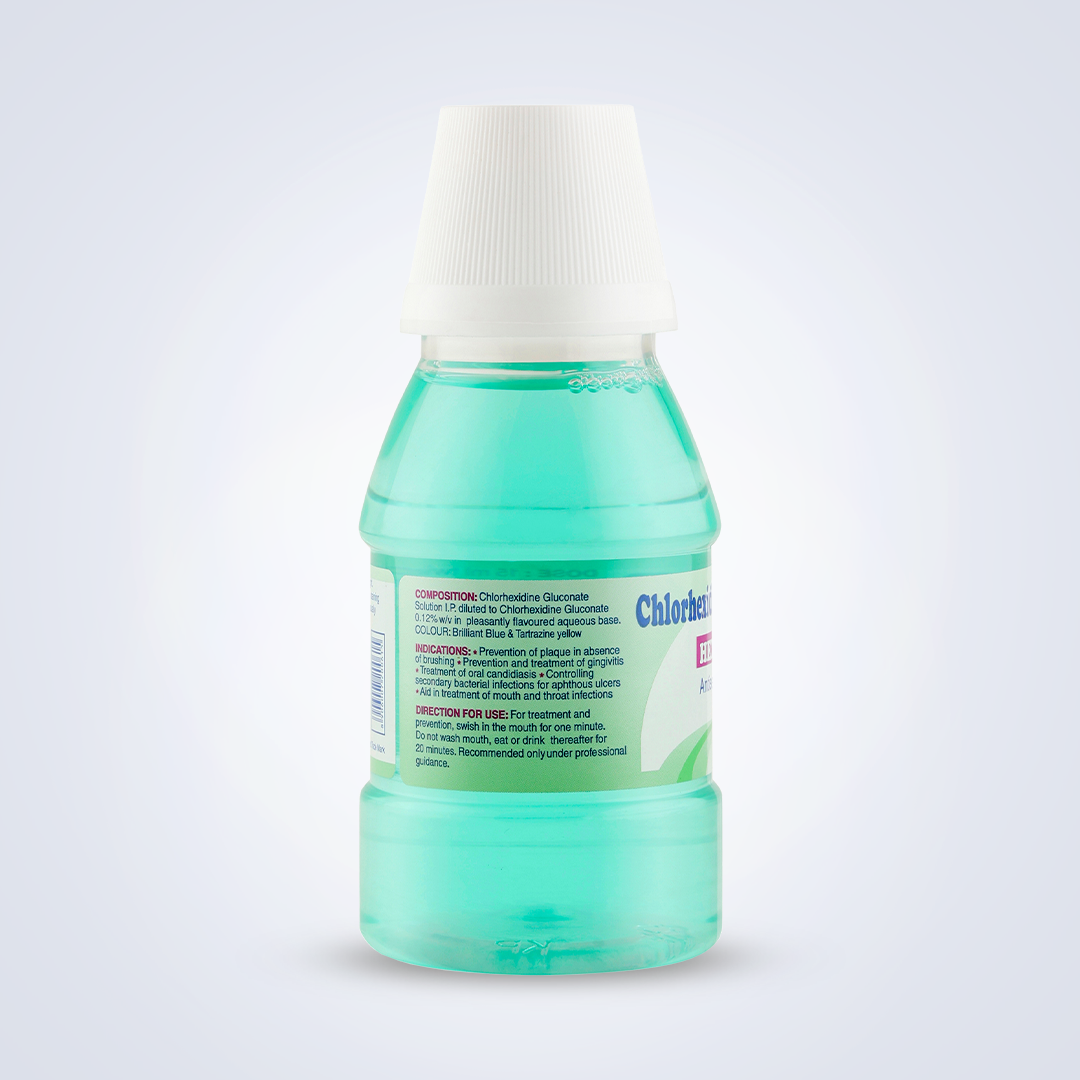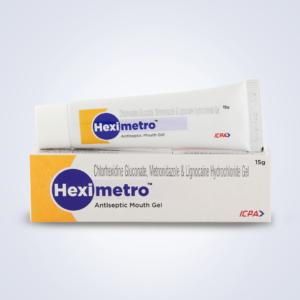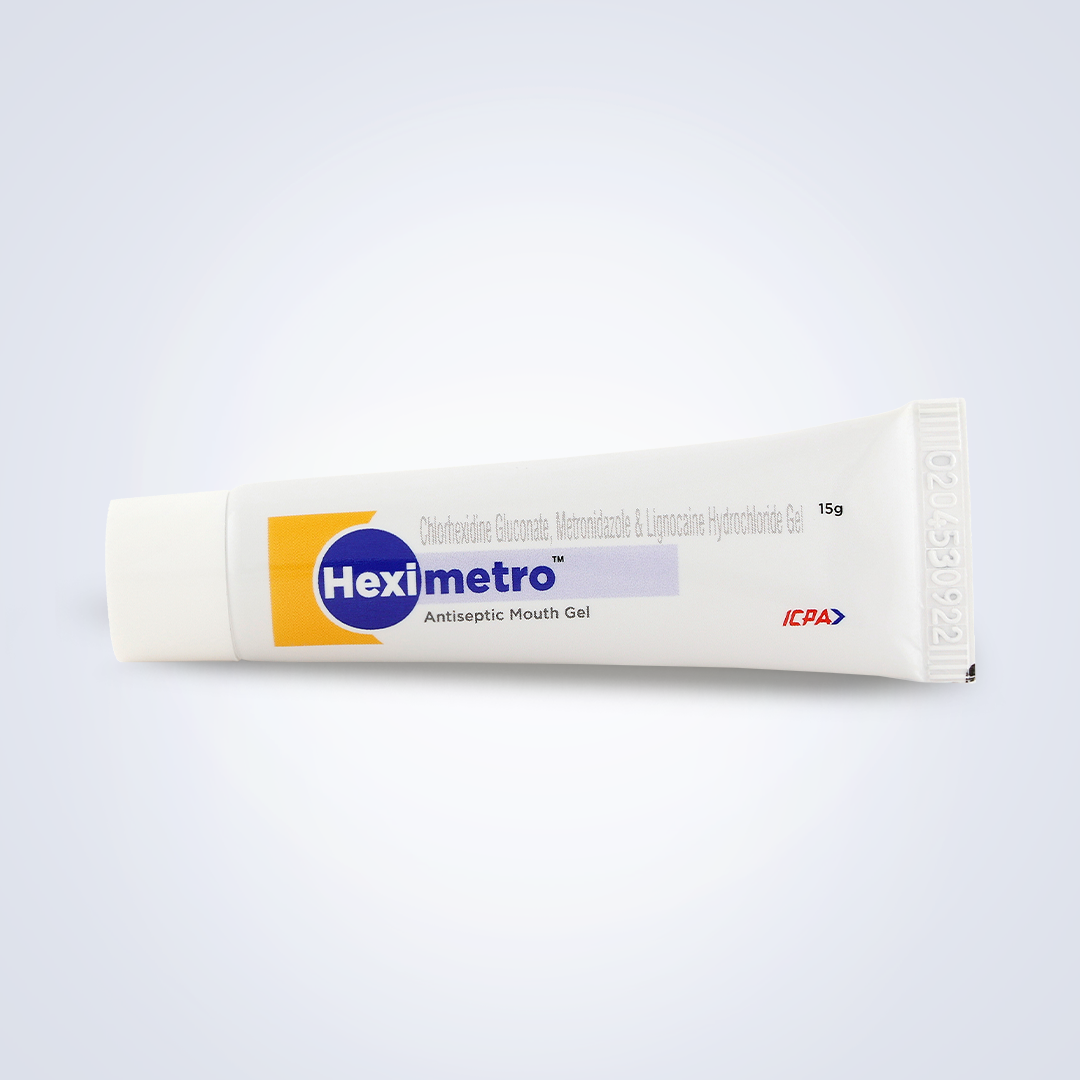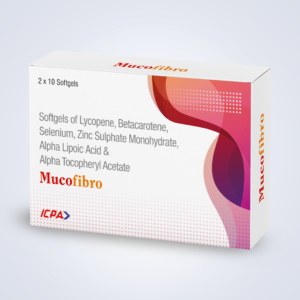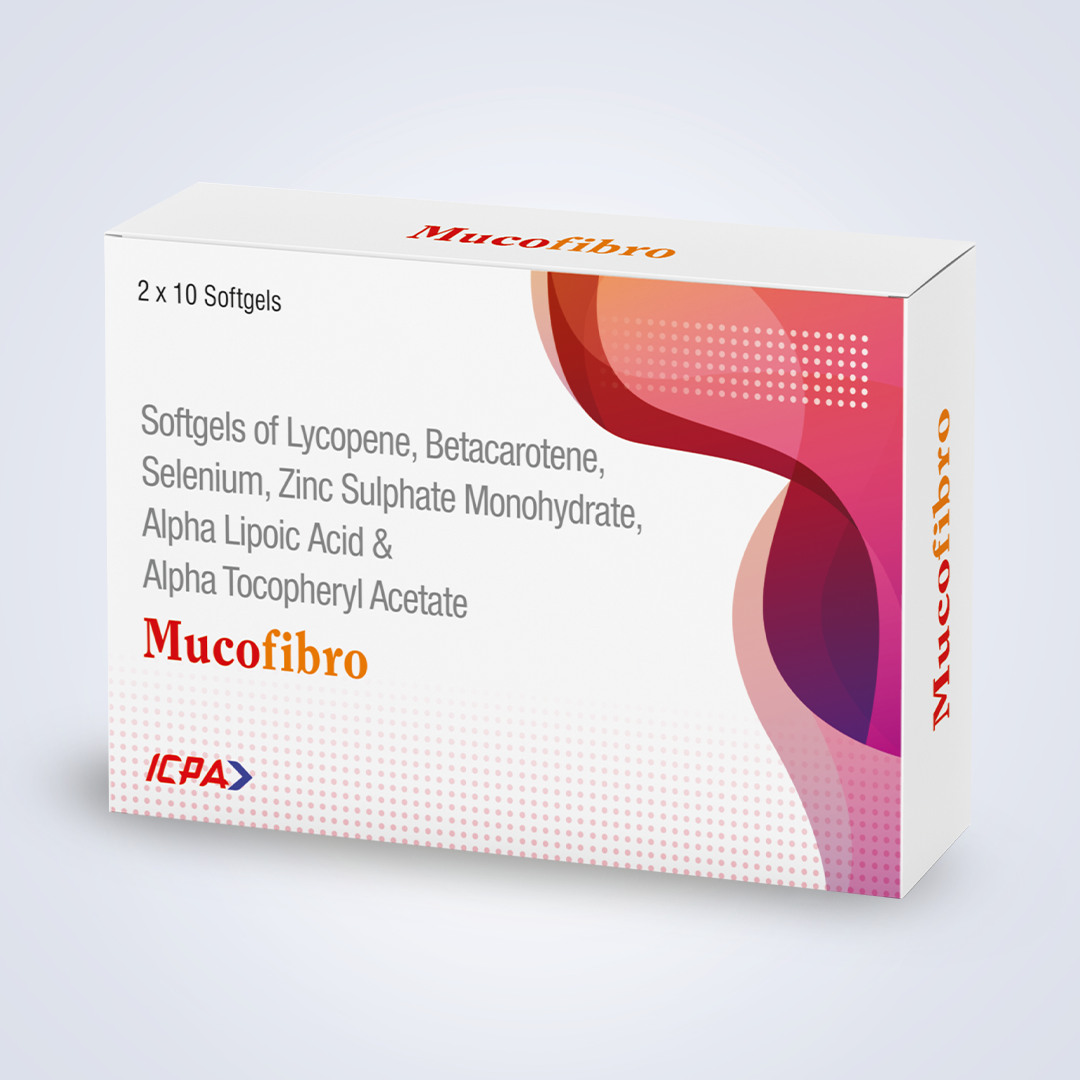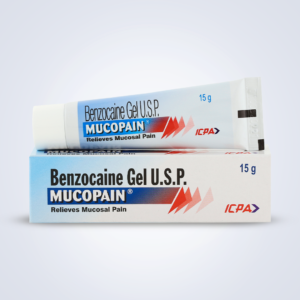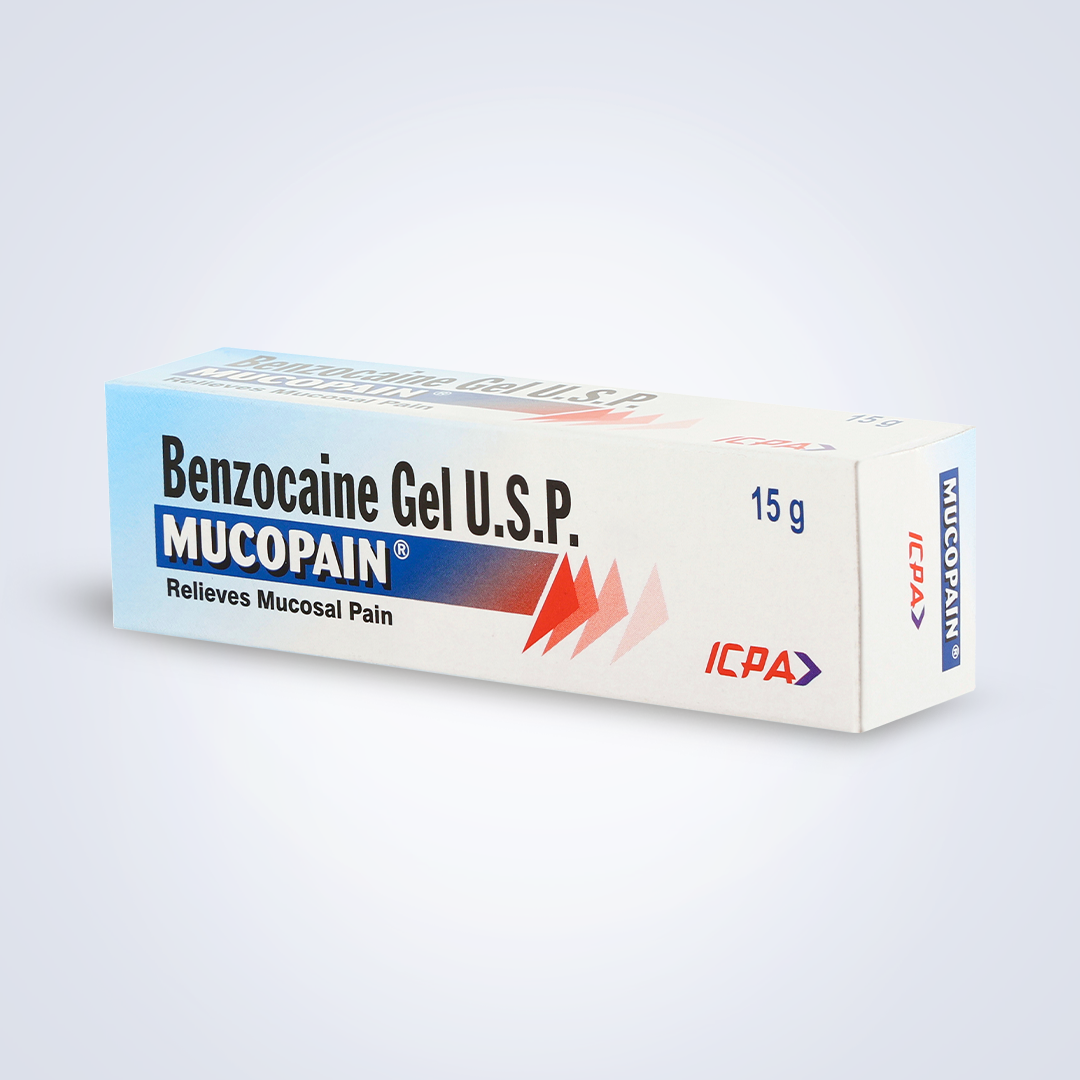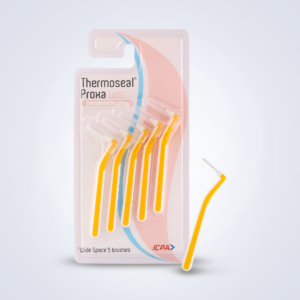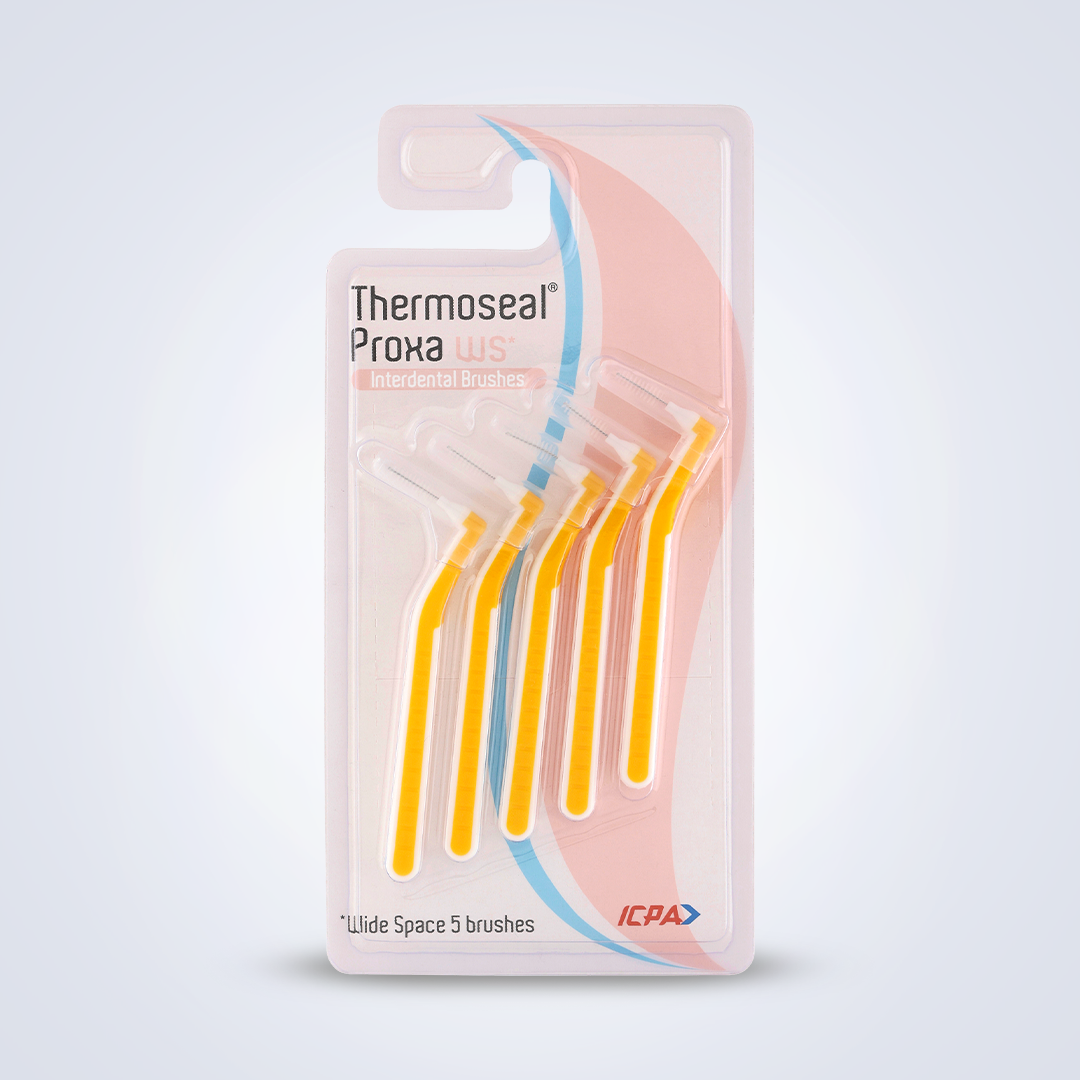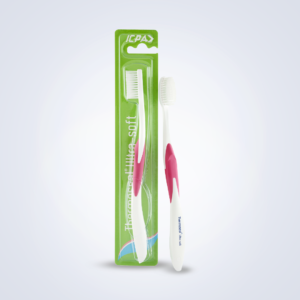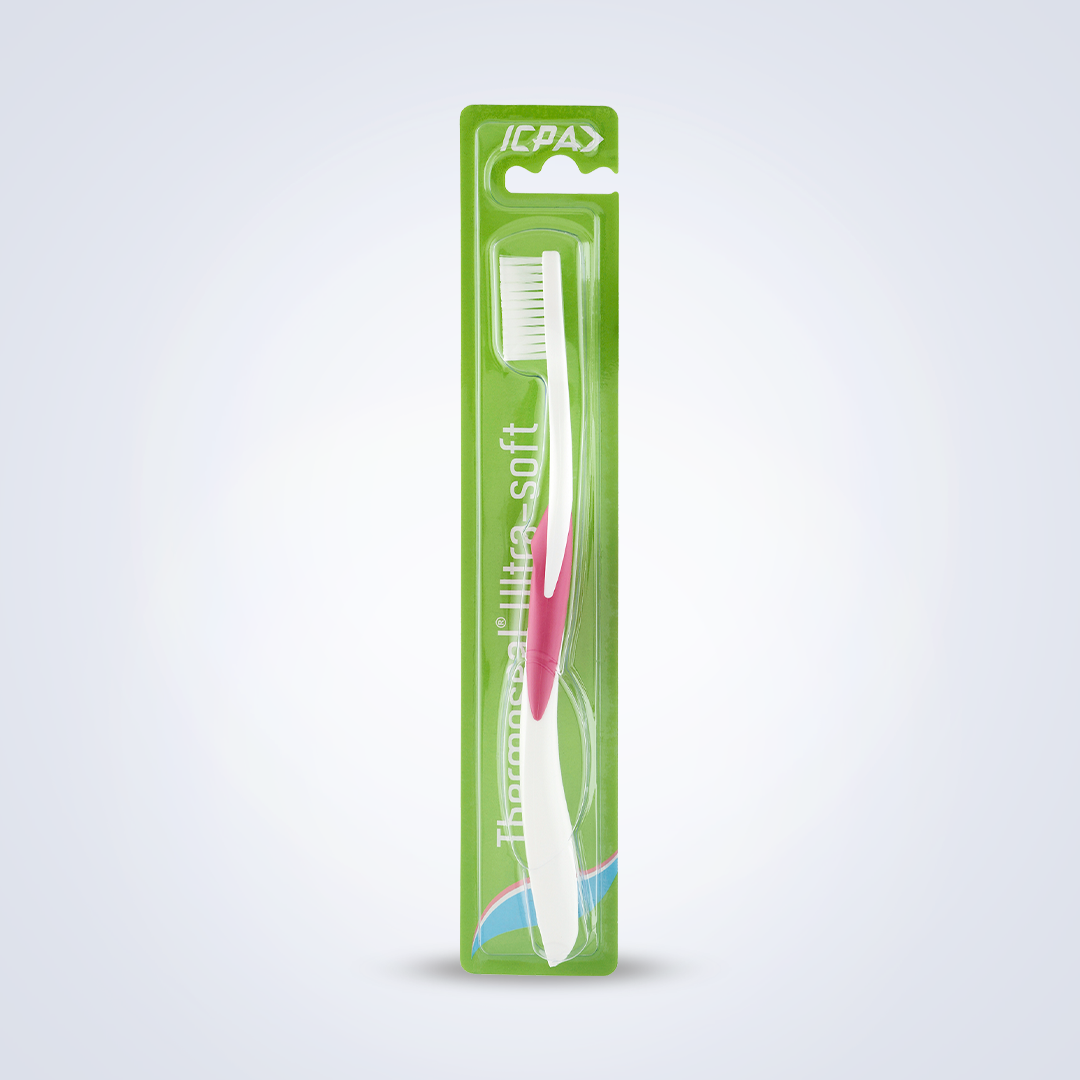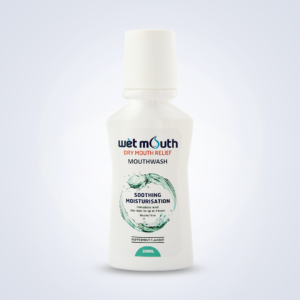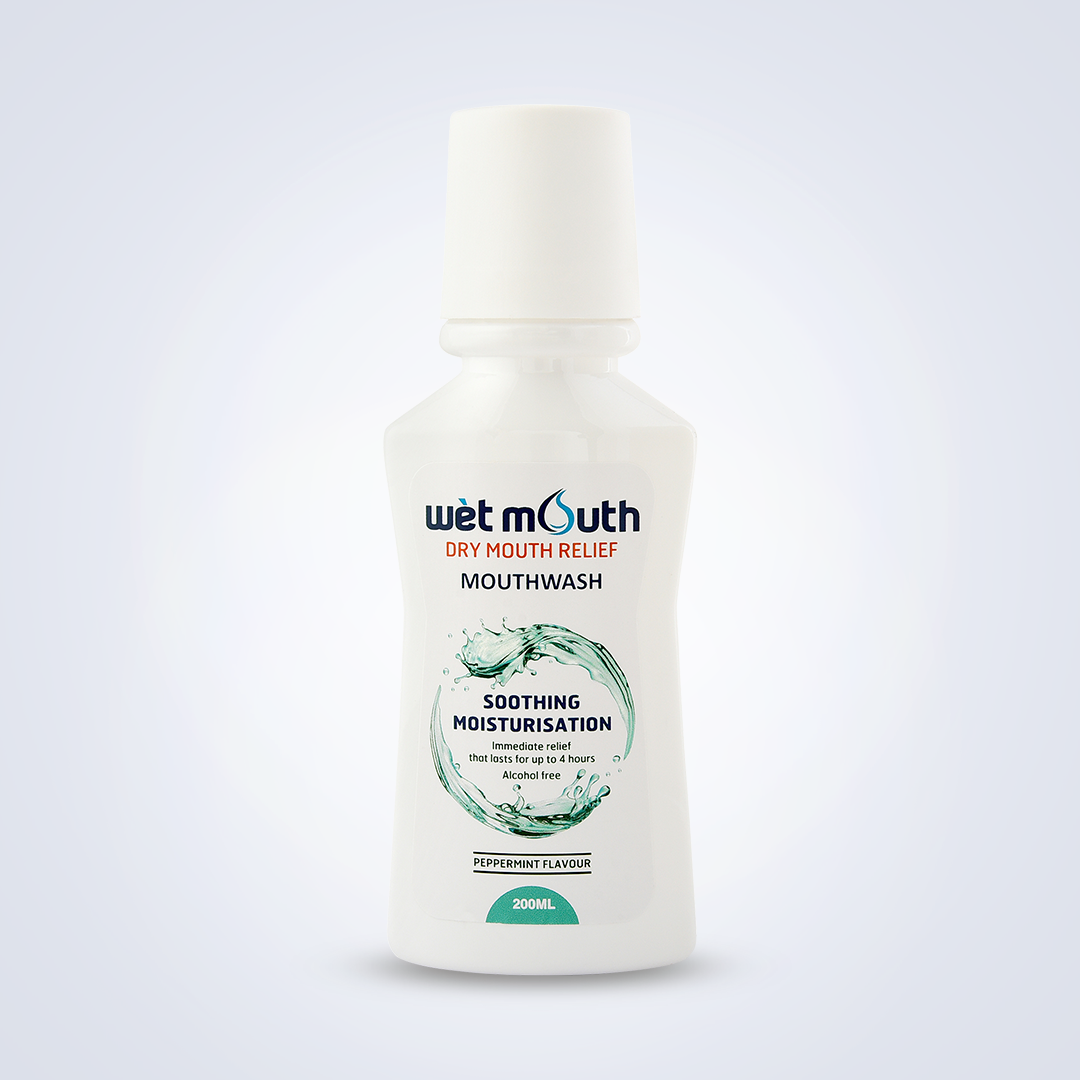Onco
Onco
Showing all 12 results
-
Coolora 100ml
Read More Quick ViewComposition:
Benzydamine hydrochloride BP 0.15 %w/v with Brilliant Blue and Tartarazine Yellow color in Aqueous base
Understanding Benzydamine hydrochloride:
Benzydamine hydrochloride is an anti-inflammatory, analgesic with anaesthetic action that can provide instant relief from a variety of painful inflammatory conditions of the oropharyngeal region when used as a rinse/ gargle.
Benzydamine shows some properties that are common with other nonsteroidal antiinflammatory drugs (NSAIDs) but also displays properties which are different from other NSAIDs.
Ref: Segre G, Hammarström S. Aspects of the mechanisms of action of benzydamine.
Int J Tissue React. 1985;7(3):187-93. PMID: 4044146.
Link: https://pubmed.ncbi.nlm.nih.gov/4044146/
Benzydamine inhibits prostaglandin and thromboxane biosynthesis at high concentrations,
which can be reached by topical application of the drug.Ref: Segre G, Hammarström S. Aspects of the mechanisms of action of benzydamine.
Int J Tissue React. 1985;7(3):187-93. PMID: 4044146.
Link: https://pubmed.ncbi.nlm.nih.gov/4044146/
Benzydamine mouthwash is considered the gold standard among anti-inflammatory agents in the management of oral mucositis in cancer patients.
Ref: Benzydamine Oro-mucosal Solution in Oral Mucositis. ClinicalTrials.gov
(NCT05055726), NIH U.S. National Library of Medicine, Sept 2021
Link:https://clinicaltrials.gov/ct2/show/NCT05055726
International guidelines and recommendations for Oral Mucositis (OM): Benzydamine is recommended
International guidelines in the management of oral mucositis were published in 2004 and then updated in 2007 and 2014. The Multinational Association of Supportive Care in Cancer and International SocietyOral Oncology (MASCC/ISOO) clinical practice guidelines (2014)recommend that benzydamine mouthwash be used to prevent OM in patients with cancer (level I evidence) – this is in agreement with the meta-analyses conducted in 2020.
Ref: Lalla RV, Bowen J, Barasch A, Elting L, Epstein J, Keefe DM, McGuire DB, Migliorati C, Nicolatou- Galitis O, Peterson DE, Raber-Durlacher JE, Sonis ST, Elad S; Mucositis Guidelines Leadership Group of the Multinational Association of Supportive Care in Cancer and International Society of Oral Oncology (MASCC/ISOO). MASCC/ISOO clinical practice guidelines for the management of mucositis secondary to cancer therapy.
Cancer. 2014 May 15;120(10):1453-61. doi: 10.1002/cncr.28592. Epub 2014 Feb 25.
Erratum in: Cancer. 2015 Apr 15;121(8):1339. PMID: 24615748; PMCID: PMC4164022.
Bayesian network analysis (2020)
Chamomile, honey, curcumin and benzydamine mouthwashes may be the most advantageous in terms of the prevention of intolerable Oral Mucositis.
Ref: Zhang X, Sun D, Qin N, Liu M, Zhang J, Li X. Comparative prevention potential of 10 mouthwashes on intolerable oral mucositis in cancer patients: A Bayesian network analysis. Oral Oncol. 2020 Aug;107:104751. doi: 10.1016/j.oraloncology.2020.104751.
Epub 2020 May 7. PMID: 32388411.
Link: https://www.sciencedirect.com/science/article/abs/pii/S1368837520301871
Network Meta-analysis (2020)
A total of 28 RCTs involving 1861 patients were included. The results of network meta- analysis showed that chlorhexidine, benzydamine, honey, and curcumin were more effective than placebo (P < 0.05).
Ref: Yu YT, Deng JL, Jin XR, Zhang ZZ, Zhang XH, Zhou X. Effects of 9 oral care solutions on the prevention of oral mucositis: a network meta-analysis of randomized controlledtrials. Medicine (Baltimore). 2020 Apr;99(16):e19661. doi: 10.1097/MD.0000000000019661.
PMID: 32311938; PMCID: PMC7220734.Benzydamine mouthwash is the only anti-inflammatory agent with evidence in the prevention of Oral Mucositis to date.
Ref: Ariyawardana A, Cheng KKF, Kandwal A, Tilly V, Al-Azri AR, Galiti D, Chiang K, Vaddi A, Ranna V, Nicolatou- Galitis O, Lalla RV, Bossi P, Elad S; Mucositis Study Group of the
Multinational Association of Supportive Care in Cancer/International Society for Oral Oncology (MASCC/ISOO). Systematic review of anti-inflammatory agents for the management of oral mucositis in cancer patients and clinical practice guidelines.
Support Care Cancer. 2019 Oct;27(10):3985-3995. doi: 10.1007/s00520-019-04888-w.
Epub 2019 Jul 8. PMID: 31286230.
Clinical indications:
1. Burning mouth due to various types of desquamative gingivitis: Lichen planus, pemphigoid types, pemphigus, and more
2. Burning mouth due to oral submucous fibrosis
3. Various red & white lesions affecting the oral mucosa.
4. Generalized oropharyngeal ulcers due to nutritional deficiency or infections.
5. Oral mucositis during and after cancer therapy.
6. Multiple oral mucosal injuries due to orthodontic appliances, oral surgery appliances
7. Painful sore throat, painful dysphagia.Coolora rinse / gargle provides instant relief from painful inflammatory conditions of the oro-pharyngeal region and helps patients get back on track with their essential life activities, such as eating, drinking, speaking, swallowing, etc.
Dosage & Administration:
Adults and Elderly:
Rinse or gargle with 15 ml (approximately 1 tablespoonful) every 11⁄2 to 3 hours as required for pain relief. The solution should be expelled from the mouth after use. Professional advice recommended. CHILDREN: Not suitable for children aged 12 years or under.
Presentation:
PET bottles of 100ml with 15ml measuring cap.
-
Fluoritop SR Varnish 10&#..
Read More Quick ViewComposition:
Each ml contains
Sodium Fluoride I.P. 50mg Equivalent to 22.6mg of fluoride in slow release form 22,600 ppm of fluoride.
Alcohol-based varnish q.s.Mechanism Of Action:
Strengthens the enamel/ increased resistance to wear.
Increases resistance to acid attacks/prevents tooth decay.
Blocks open & sensitive dentinal tubules/ treats & prevents dentinal hypersensitivity.For Caries Prevention:
Dose: 0.3ml to 0.5ml (2 to 5 drops) for primary dentition 1ml (8 to 10 drops) for mix dentition 1ml to 1.5ml (10-15 drops) for adult dentition Frequency Of Application: Once in six months, for caries preventive action. For aggressive carious conditions once every 3 months.
For Hypersensitivity:
Dose: 0.5ml (4 to 5 drops) per quadrant.
Frequency Of Application: Once every week for three weeks or two applications in a week.Mode of Application:
Select teeth – Remove visible debris & deposits on the teeth surface.
Dry with an air syringe or cotton pledget.
Paint the recommended quantity of varnish on the tooth surface directly through the nozzle or with an applicator brush, cotton bud, probe, or cotton wool pledget.
Now, allow it to dry. After the varnish is painted on the tooth surface, it is reported to remain there for 12/15 hours. During this time, fluoride is deposited in the enamel.Precautions:
The patient should not eat or brush for at least 4 hours after varnish application.
Other fluoride preparations like gels and rinses should not be used for atleast 24 hrs after the varnish application.
Fluoride tablets are to be discontinued for several days after varnish application.Adverse Effects:
When the recommended dosage of Fluoride varnish is followed, no side effects should occur. Inadvertent ingestion can produce headaches and weakness. More severe instances of excessive ingestion can cause CNS problems such as irritability, paresthesia, tetany, convulsion, respiratory failure, and cardiac failure. Fluoride has direct toxic action on nerve tissue.
Contraindications:
Hypersensitivity to fluorides.
Presentation:
Contains 10 tubes of 1.5ml each
-
Hexidine 160ml
Read More Quick ViewComposition:
Chlorhexidine gluconate solution I.P. diluted to chlorhexidine gluconate 0.2% w/v in a pleasantly flavoured base.
Understanding Chlorhexidine gluconate:
1. Chlorhexidine (CHX) is known as the gold standard antiplaque agent because of its persistent attachment and sustained release for long Antiseptic, Antiplaque, Antiviral, Antifungal action.
2. Five decades of evidence for the antibacterial, antiviral, antifungal action.
3. Chlorhexidine’s antiplaque effect is because of its dicationic nature, which confers it the property of substantivity— persistent antimicrobial action through bactericidal and bacteriostatic effects.Mechanism of action:
1. Chlorhexidine is a symmetric bis-biguanide molecule carrying two positive charges at physiological pH. Due to its cationic properties, chlorhexidine binds to negatively charged sites within the plaque biofilm including the bacteria, extracellular polysaccharides, and glycoproteins.
2. The cationic chlorhexidine molecule gets rapidly attracted to the surface of a negatively charged bacterial cell wall, where it binds with specific and strong adsorption to phosphate-containing components of the bacterial cell wall.
3. Due to the strong binding, chlorhexidine passively diffuses through the bacterial cell wall.
4. First, chlorhexidine damages the outer cell membrane compromising the cell integrity, which allows chlorhexidine to infiltrate the inner cell membrane, resulting in greater permeability.
5. This infiltration results in an outflow of low-molecular-weight molecules and cytoplasmic components escaping from the bacterial cell.
6. At this point, chlorhexidine’s antimicrobial action remains bacteriostatic, which can be reversed if chlorhexidine is removed. However, if the chlorhexidine concentration remains stable over time or increases, it can cause irreversible cell damage via bactericidal action.
7. The bactericidal action involves cytoplasmic coagulation and precipitation, where chlorhexidine forms complexes with phosphorylated compounds, such as ATP and nucleic acids.
8. The dicationic chlorhexidine exhibits good adherence to most oral surfaces (including mucous membranes, teeth, and salivary glycoproteins) due to their negative charge, thus interfering with bacterial adhesion, allowing substantivity for up to 12 hours.Chlorhexidine the Gold standard antiplaque agent
1. Chlorhexidine is the gold standard when it comes to substantivity, which explains its superior
anti-plaque effect because of its superior degree of persistence at the tooth surface (hydroxyapatite) or, more correctly, the superior persistence of its antibacterial effect (both bactericidal and bacteriostatic) at the tooth surface.
2. Chlorhexidine comes under Group A mouthwashes with good substantivity (prolonged action) as well as action on a wide spectrum of bacteria. The only category of mouth rinses belonging to this group are bisguanides (Chlorhexidine). The true anti-plaque effect of Chlorhexidine empowers it to replace mechanical cleaning for short periods when tooth brushing is not possible.Indications:
1. Prevention & treatment of gingivitis. For home use between periodontal treatment visits.
2. Minimizing plaque build up in the absence of brushing.
3. Fungal infections of the mouth: oral candidiasis, denture stomatitis.
4. Secondary bacterial infections for aphthous ulcer.
5. Rinsing & gargling for oropharyngeal viral infections.
6. Alveolar osteitis (dry socket) prevention.
7. Reducing viral spread from oropharyngeal region by reducing the viral load
8. As a pre-procedural rinse before dental procedures.
9. Patients undergoing cancer therapy who can not perform mechanical plaque control due to pain and discomfort in the gingiva and oral mucosa.
10. Post-surgical mouthwash: If toothbrushing is not possible due to postoperative pain after any type of oral, periodontal, soft tissue surgery, or extractions, it is recommended that a 1-minute rinse is performed 3 times a day for 7 days or until sutures are removed and oral hygiene in the form of toothbrushing can resume.Directions for use:
1. Recommended only under professional guidance.
2. Recommended twice daily oral rinsing for 30 seconds at least, morning and evening after toothbrushing. Fill the cap up to 10 ml mark and swish in mouth undiluted for 30 seconds at least, and spit out.
3. For best results, rinse at least 30 minutes after toothbrushing, and avoid eating / drinking for at least 30 minutes after rinsing.
4. For denture stomatitis, cleanse and soak dentures in chlorhexidine mouthwash solution for 15 minutes twice daily.
5. Prolonged use may cause temporary staining of teeth, removed by oral prophylaxis. This usually disappears once the treatment is over, or may require scaling/ polishing. However, staining is known to occur only after continuously using for 4 weeks or more.Presentation:
PET bottles of 80ml (2.7 fl.oz.), 160ml (5.41 fl.oz.) with 10ml measuring cap. Plastic bottle of 500 ml (16.9 fl. oz.).
Caution:
Not to be swallowed. For oral use only.
-
Hexidine 500ml
Read More Quick ViewComposition:
Chlorhexidine gluconate solution I.P. diluted to chlorhexidine gluconate 0.2% w/v in a pleasantly flavoured base.
Understanding Chlorhexidine gluconate:
1. Chlorhexidine (CHX) is known as the gold standard antiplaque agent because of its persistent attachment and sustained release for long Antiseptic, Antiplaque, Antiviral, Antifungal action.
2. Five decades of evidence for the antibacterial, antiviral, antifungal action.
3. Chlorhexidine’s antiplaque effect is because of its dicationic nature, which confers it the property of substantivity— persistent antimicrobial action through bactericidal and bacteriostatic effects.Mechanism of action:
1. Chlorhexidine is a symmetric bis-biguanide molecule carrying two positive charges at physiological pH. Due to its cationic properties, chlorhexidine binds to negatively charged sites within the plaque biofilm including the bacteria, extracellular polysaccharides, and glycoproteins.
2. The cationic chlorhexidine molecule gets rapidly attracted to the surface of a negatively charged bacterial cell wall, where it binds with specific and strong adsorption to phosphate-containing components of the bacterial cell wall.
3. Due to the strong binding, chlorhexidine passively diffuses through the bacterial cell wall.
4. First, chlorhexidine damages the outer cell membrane compromising the cell integrity, which allows chlorhexidine to infiltrate the inner cell membrane, resulting in greater permeability.
5. This infiltration results in an outflow of low-molecular-weight molecules and cytoplasmic components escaping from the bacterial cell.
6. At this point, chlorhexidine’s antimicrobial action remains bacteriostatic, which can be reversed if chlorhexidine is removed. However, if the chlorhexidine concentration remains stable over time or increases, it can cause irreversible cell damage via bactericidal action.
7. The bactericidal action involves cytoplasmic coagulation and precipitation, where chlorhexidine forms complexes with phosphorylated compounds, such as ATP and nucleic acids.
8. The dicationic chlorhexidine exhibits good adherence to most oral surfaces (including mucous membranes, teeth, and salivary glycoproteins) due to their negative charge, thus interfering with bacterial adhesion, allowing substantivity for up to 12 hours.Chlorhexidine the Gold standard antiplaque agent
1. Chlorhexidine is the gold standard when it comes to substantivity, which explains its superior
anti-plaque effect because of its superior degree of persistence at the tooth surface (hydroxyapatite) or, more correctly, the superior persistence of its antibacterial effect (both bactericidal and bacteriostatic) at the tooth surface.
2. Chlorhexidine comes under Group A mouthwashes with good substantivity (prolonged action) as well as action on a wide spectrum of bacteria. The only category of mouth rinses belonging to this group are bisguanides (Chlorhexidine). The true anti-plaque effect of Chlorhexidine empowers it to replace mechanical cleaning for short periods when tooth brushing is not possible.Indications:
1. Prevention & treatment of gingivitis. For home use between periodontal treatment visits.
2. Minimizing plaque build up in the absence of brushing.
3. Fungal infections of the mouth: oral candidiasis, denture stomatitis.
4. Secondary bacterial infections for aphthous ulcer.
5. Rinsing & gargling for oropharyngeal viral infections.
6. Alveolar osteitis (dry socket) prevention.
7. Reducing viral spread from oropharyngeal region by reducing the viral load
8. As a pre-procedural rinse before dental procedures.
9. Patients undergoing cancer therapy who can not perform mechanical plaque control due to pain and discomfort in the gingiva and oral mucosa.
10. Post-surgical mouthwash: If toothbrushing is not possible due to postoperative pain after any type of oral, periodontal, soft tissue surgery, or extractions, it is recommended that a 1-minute rinse is performed 3 times a day for 7 days or until sutures are removed and oral hygiene in the form of toothbrushing can resume.Directions for use:
1. Recommended only under professional guidance.
2. Recommended twice daily oral rinsing for 30 seconds at least, morning and evening after toothbrushing. Fill the cap up to 10 ml mark and swish in mouth undiluted for 30 seconds at least, and spit out.
3. For best results, rinse at least 30 minutes after toothbrushing, and avoid eating / drinking for at least 30 minutes after rinsing.
4. For denture stomatitis, cleanse and soak dentures in chlorhexidine mouthwash solution for 15 minutes twice daily.
5. Prolonged use may cause temporary staining of teeth, removed by oral prophylaxis. This usually disappears once the treatment is over, or may require scaling/ polishing. However, staining is known to occur only after continuously using for 4 weeks or more.Presentation:
PET bottles of 80ml (2.7 fl.oz.), 160ml (5.41 fl.oz.) with 10ml measuring cap. Plastic bottle of 500 ml (16.9 fl. oz.).
Caution:
Not to be swallowed. For oral use only.
-
Hexidine 80ml
Read More Quick ViewComposition:
Chlorhexidine gluconate solution I.P. diluted to chlorhexidine gluconate 0.2% w/v in a pleasantly flavoured base.
Understanding Chlorhexidine gluconate:
1. Chlorhexidine (CHX) is known as the gold standard antiplaque agent because of its persistent attachment and sustained release for long Antiseptic, Antiplaque, Antiviral, Antifungal action.
2. Five decades of evidence for the antibacterial, antiviral, antifungal action.
3. Chlorhexidine’s antiplaque effect is because of its dicationic nature, which confers it the property of substantivity— persistent antimicrobial action through bactericidal and bacteriostatic effects.Mechanism of action:
1. Chlorhexidine is a symmetric bis-biguanide molecule carrying two positive charges at physiological pH. Due to its cationic properties, chlorhexidine binds to negatively charged sites within the plaque biofilm including the bacteria, extracellular polysaccharides, and glycoproteins.
2. The cationic chlorhexidine molecule gets rapidly attracted to the surface of a negatively charged bacterial cell wall, where it binds with specific and strong adsorption to phosphate-containing components of the bacterial cell wall.
3. Due to the strong binding, chlorhexidine passively diffuses through the bacterial cell wall.
4. First, chlorhexidine damages the outer cell membrane compromising the cell integrity, which allows chlorhexidine to infiltrate the inner cell membrane, resulting in greater permeability.
5. This infiltration results in an outflow of low-molecular-weight molecules and cytoplasmic components escaping from the bacterial cell.
6. At this point, chlorhexidine’s antimicrobial action remains bacteriostatic, which can be reversed if chlorhexidine is removed. However, if the chlorhexidine concentration remains stable over time or increases, it can cause irreversible cell damage via bactericidal action.
7. The bactericidal action involves cytoplasmic coagulation and precipitation, where chlorhexidine forms complexes with phosphorylated compounds, such as ATP and nucleic acids.
8. The dicationic chlorhexidine exhibits good adherence to most oral surfaces (including mucous membranes, teeth, and salivary glycoproteins) due to their negative charge, thus interfering with bacterial adhesion, allowing substantivity for up to 12 hours.Chlorhexidine the Gold standard antiplaque agent
1. Chlorhexidine is the gold standard when it comes to substantivity, which explains its superior
anti-plaque effect because of its superior degree of persistence at the tooth surface (hydroxyapatite) or, more correctly, the superior persistence of its antibacterial effect (both bactericidal and bacteriostatic) at the tooth surface.
2. Chlorhexidine comes under Group A mouthwashes with good substantivity (prolonged action) as well as action on a wide spectrum of bacteria. The only category of mouth rinses belonging to this group are bisguanides (Chlorhexidine). The true anti-plaque effect of Chlorhexidine empowers it to replace mechanical cleaning for short periods when tooth brushing is not possible.Indications:
1. Prevention & treatment of gingivitis. For home use between periodontal treatment visits.
2. Minimizing plaque build up in the absence of brushing.
3. Fungal infections of the mouth: oral candidiasis, denture stomatitis.
4. Secondary bacterial infections for aphthous ulcer.
5. Rinsing & gargling for oropharyngeal viral infections.
6. Alveolar osteitis (dry socket) prevention.
7. Reducing viral spread from oropharyngeal region by reducing the viral load
8. As a pre-procedural rinse before dental procedures.
9. Patients undergoing cancer therapy who can not perform mechanical plaque control due to pain and discomfort in the gingiva and oral mucosa.
10. Post-surgical mouthwash: If toothbrushing is not possible due to postoperative pain after any type of oral, periodontal, soft tissue surgery, or extractions, it is recommended that a 1-minute rinse is performed 3 times a day for 7 days or until sutures are removed and oral hygiene in the form of toothbrushing can resume.Directions for use:
1. Recommended only under professional guidance.
2. Recommended twice daily oral rinsing for 30 seconds at least, morning and evening after toothbrushing. Fill the cap up to 10 ml mark and swish in mouth undiluted for 30 seconds at least, and spit out.
3. For best results, rinse at least 30 minutes after toothbrushing, and avoid eating / drinking for at least 30 minutes after rinsing.
4. For denture stomatitis, cleanse and soak dentures in chlorhexidine mouthwash solution for 15 minutes twice daily.
5. Prolonged use may cause temporary staining of teeth, removed by oral prophylaxis. This usually disappears once the treatment is over, or may require scaling/ polishing. However, staining is known to occur only after continuously using for 4 weeks or more.Presentation:
PET bottles of 80ml (2.7 fl.oz.), 160ml (5.41 fl.oz.) with 10ml measuring cap. Plastic bottle of 500 ml (16.9 fl. oz.).
Caution:
Not to be swallowed. For oral use only.
-
Hexidine EP 150ml
Read More Quick ViewChlorhexidine Mouthwash IP/BP
Composition:
Chlorhexidine gluconate solution I.P. dilute to chlorhexidine gluconate 0.12% W/V in pleasantly flavored aqueous base.COLOR:
Brilliant Blue & Tartrazine YellowIndications:
- Prevention of plaque in absence of brushing
- Prevention and treatment of gingivitis
- Treatment of oral candidiasis
- Controlling secondary bacterial infections for aphthous ulcers
- Aid in treatment of mouth and throat infections
DIRECTION FOR USE:
For treatment and prevention, swish in your mouth for one minute. Do not rinse, eat or drink thereafter for 20 minutes. Recommended only under professional guidance.DOSE:
10ml, twice a day.STORAGE:
Keep out of direct sun light.WARNING:
NOT TO BE SWALLOWED. FOR ORAL USE ONLY. Brown staining of teeth may be reported, while using the product in some cases. This usually disappears once the treatment is over or may require scaling/polishing. Remove foil before use.
Net content: 150 ml/500 ml
-
Heximetro 15gm
Read More Quick ViewComposition:
Chlorhexidine Gluconate 1% w/w, Metronidazole 1% w/w, Lignocaine 2% w/w
Introduction:
Heximetro is an antiseptic mouth gel with triple action- that synergistically acts against both —aerobic and anaerobic pathogens in oral lesions, and also provides instant pain relief via topical anaesthesia.
Chlorhexidine:
Chlorhexidine is a well-known antiseptic, and antimicrobial agent with decades of evidence of its antibacterial, antiviral, and antifungal action. Chlorhexidine offers action against aerobic pathogens like- S. sanguis, S. mutans (Chlorhexidine- binds with the phospholipids in the innercell membrane causing cell wall integrity). The application of chlorhexidine (CHX) gel on ulcers and wound surfaces after oral surgical procedures has received considerable attention— supported scientifically by the antimicrobial properties of chlorhexidine. Chlorhexidine acts against bacteria (Gram-positive and Gram-negative), with bacteriostatic action at low concentrations and bactericidal action at high concentrations Chlorhexidine is also known for its antiviral and antifungal effects.
Mode of action:
Chlorhexidine acts on the target micro-organisms by increasing their cell membrane permeability which causes the precipitation of cytoplasmic macromolecules and subsequent microbial death via cell lysis. Therefore, the effect of CHX is mainly based on minimizing the microbial load —playing an anti-infection role, which seems critical in the early stages of wound healing.
Metronidazole:
Metronidazole offers action against anaerobic pathogens like- P. gingivalis, etc (inhibits protein synthesis by interacting with DNA, and causes a loss of helical DNA structure and strand breakage)
Lignocaine:
Heximetro also contains 2% Lignocaine, which can provide instant and profound anesthesia over the surfaces of oral lesions.
Indications:
1. Infected painful ulcers in the mouth
2. Periodontal diseases: gingivitis, periodontitis with pockets
3. Oral candidiasis, esp painful denture stomatitis lesions
4. Aphthous ulcers
5. Ulcers due to dentures
6. Common oral injuries, including those from orthodontic appliances and oral surgery appliances
7. Dry socket (alveolar osteitis) prevention and treatment
8. Infections in the interdental areas: to be applied with interdental brushes like Thermoseal proxa
9. Maintenance of oral hygiene, especially interdentally — in cancer patients,
gingivitis & periodontitis patients, between and around restorationsHeximetro in various clinical conditions:
A. Heximetro in dry socket:
The extraction of third molars is a common dental procedure. The American Association of Oral and Maxillofacial Surgeons states that “about 85% of third molars will eventually need to be removed”. Available data also shows that 5 to 30% third molar extractions can create a “dry socket” – a complication associated with severe pain.
How can we prevent this unwanted complication?
1. A meta-analysis published in “Oral Diseases” in August 2016, reviewed 11 trials and found that 0.2% chlorhexidine gel was effective in preventing alveolar osteitis after lower third molar extraction(s). https://onlinelibrary.wiley.com/doi/abs/10.1111/odi.12553
2. Journal of Oral & Maxillofacial Surgery in May 2017, reviewed Twenty-three studies published from 1979 to 2015 and concluded that chlorhexidine, used in any formulation and concentration can prevent dry socket in patients who have undergone third molar extraction. https://www.joms.org/article/S0278-2391(17)30020-4/fulltext
3. Another systematic review & meta-analysis published in May 2017 found that Chlorhexidine gel is superior to placebo in reducing the incidence of alveolar osteitis after mandibular third molar
extraction. https://bmcoralhealth.biomedcentral.com/articles/10.1186/s12903-017-0376-34. The largest network meta-analysis done till now reviewed 37 randomized controlled trials that included 6175 mandibular third molar surgeries in 4716 patients. This study published in Sept 2020 showed that 0.2% Chlorhexidine gel placed in the socket can prevent dry socket after mandibular third molar surgery. https://www.sciencedirect.com/science/article/abs/pii/S1010518220301578
Chlorhexidine in its therapeutic concentration of 1% fortified with an additional metronidazole cover, and lignocaine surface anesthesia, heximetro can ensure the healing of the dry socket.
B. Heximetro as a post-surgical gel
High-quality articles demonstrate the evidence that Chlorhexidine gel application exerts a beneficial effect on oral surgical wound healing. Chlorhexidine gel application significantly decreases the risk of surgical complications and/or poor wound healing. With additional metronidazole cover and lignocaine surface anesthesia, heximetro can ensure uneventful healing.
C. Heximetro in denture stomatitis
Denture stomatitis (DS) seen in about 15-70% of denture wearers is a condition characterized by a generalized inflammation of the denture-covered palatal mucosa. The clinical signs can vary from petechiae to generalized inflammation with papillary hyperplasia. It is a harmless form of oral candidiasis associated with a quantitative increase of yeasts (a mixture of Candida species eg. C. albicans, C. tropicalis, C. krusei, C. guilliermondii, C. glabrata) on the mucosa and the denture’s fit surface. Complete and removable dentures accumulate, among all, C. albicans on the porous surface of the acrylic resin.
Denture hygiene is an important factor in the prevention and treatment of DS. Chlorhexidine digluconate, an effective antimicrobial agent active against various bacteria, viruses, and fungi including C. albicans, is recommended in the treatment of denture stomatitis because of its proven clinical and microbiological efficacy. Lignocaine can ensure comfortable denture wear by providing surface anesthesia on the inflamed tissue surfaces.D. Hexigel in cancer patients
Patients with sensitive soft tissues can use an interdental brush dipped in Heximetro gel to clean the areas between teeth, crowns, and bridges to ensure good oral health.
E. Hexigel in periodontitis patients
Cleaning the interdental areas is a critical component of oral care in periodontitis patients. Patients with periodontitis can use an interdental brush dipped in Heximetro gel to clean the areas between teeth, crowns, and bridges to ensure good periodontal health.
F. Hexigel in restorative dentistry
Restorations with overhangs and rough edges can create plaque-retentive areas around the crowns, bridges, and fillings. Cleaning the interdental areas is critical to maintaining soft tissue health interdentally.
Dose:
2 to 3 times a day or as directed by the doctor.
Presentation:
15 gms in a lami tube
-
Mucofibro Antioxidants
Read More Quick ViewComposition:
Mucofibro is a formulation of antioxidants available in the form of softgel capsules.
Each soft gelatin capsule contains
Lycopene – 5 mg,
Beta-carotene – 10 mg,
Alpha lipoic acid 50 mg,
Elemental copper – 1 mg,
Elemental selenium – 75 mcg,
Vitamin E – 10 IU and
Zinc sulphate – 27.45 mg.Reactive Oxygen Species (ROS) —Free radicals
ROS are chemical molecules, specifically oxygen species formed by the partial reduction of oxygen that are generated during mitochondrial oxidative metabolism as well as in cellular response to cytokines and bacterial invasion.
The double-edged sword
ROS serve as crucial players in our body’s defense against invading pathogens. ROS play pivotal roles in cell signaling, gene regulation, and antimicrobial defense. These molecules have antimicrobial properties that help combat infections in the oral cavity. However, ROS can be a “double-edged sword” since an excessive presence of these molecules can become cytotoxic to our cells.
The concept of Oxidative Stress:
To counteract the deleterious effects of excessive free radicals, our bodies possess an antioxidant defense system that can inhibit and reduce the damage caused by the harmful ROS. However, when ROS levels exceed cellular antioxidant capacity, a condition termed oxidative stress occurs. Oxidative stress is implicated in the pathogenesis of several conditions including aging, diabetes mellitus, hypertension, and cancer.
Antioxidants:
These are oxidative stress busters used as auxiliary treatments in a variety of conditions such as cardiovascular diseases, pulmonary diseases, aging, and atherosclerosis.
Mucofibro: Antioxidant supplemements
With an optimal combination of anti-oxidants, carotenoids, and minerals, Mucofibro detoxifies the cells by scavenging the cell-damaging free radicals. This cell detoxification removes oxidative stress in the cells and enhances the overall tissue healing capacity, which results in faster healing of various oral lesions and conditions. It also improves the clinical outcomes of various non-surgical and surgical treatments.
Indications
1. Precancerous lesions: Leukoplakia, Erythroplakia (to prevent/ slow down the malignant transformation)
2. Precancerous conditions: Oral Submucous Fibrosis (to prevent/ slow down the malignant transformation)
3. As an adjunct to non-surgical & surgical periodontal treatments for various gum diseases: Gingivitis and Periodontitis
4. As an adjunct to implant treatments to improve osseointegration.
5. As an adjunct to bone regeneration & tissue engineering procedures.
6. In various oral surgical procedures for improved healing.
7. For improved healing of oral ulcersA. The role of antioxidants in periodontal health
The link between oxidative stress and periodontal disease
Periodontal disease is a persistent inflammatory condition that impacts the periodontal tissues. Emerging research has elucidated the connection between oxidative stress and periodontal disease. An article in a high-impact factor journal terms periodontitis as an inflammatory disease of oxidative stress.
In the early stages of periodontal disease, especially in the case of periodontitis, a prominent oxidative process unfolds, characterized by elevated levels of reactive oxygen and nitrogen species (ROS and RNS). Evidence says that much of the damage done to periodontal tissues and supporting bone structure is due to ROS emission.Promising results
Recent evidence supports the idea that antioxidants can play a pivotal role in the treatment of periodontitis. A meta-analysis comprising fifteen clinical trials demonstrated uniformly positive outcomes associated with antioxidant supplementation during periodontitis treatment. Lycopene is emerging as a promising treatment modality as an adjunct to full-mouth periodontal treatment.
These findings offer hope and promise for those seeking alternative therapies to complement traditional periodontal treatments.B. The role of antioxidants in implantology
1. Antioxidants like lycopene exert proliferative effects on human osteoblasts.
2. Antioxidants like lycopene may increase new bone formation in periodontal and dental implant treatments.
3. Lycopene improves implant osseointegration and prevents delayed osseointegration.
4. Antioxidants also help in bone formation and prevent bone loss under osteopenic conditions.C. Antioxidants in pre-cancerous conditions like Oral Submucous Fibrosis (OSMF)
Mucofibro improves mouth opening and prevents the malignant transformation of OSMF (and other precancerous lesions/ conditions).
1. Lycopene, a carotenoid derived from plants, demonstrates anti-carcinogenic properties and prevents the malignant transformation of precancerous lesions and conditions. Lycopene exhibits the highest physical quenching rate constant with singlet oxygen. Lycopene is the first line of treatment for OSMF, apart from demonstrating profound benefits with precancerous lesions such as leukoplakia.
2. β-carotene, a precursor of vitamin A, is an antioxidant that traps free radicals. It retards the development of cancer cells by minimizing the free radical-induced damage.
3. α-Lipoic Acid (LA) is known as a universal antioxidant as it can remove free radicals in water as well as lipid medium.
4. α-Tocopherol (Vitamin E) has the antioxidant action.
5. Selenium (Se) is an anticarcinogenic agent that prevents unwanted cell growth.
6. Zinc (Zn), essential for multiple cellular functions, acts as an antioxidant andstabilizes membranes.
7. Copper (Cu) enhances the activity of antioxidants.Dose
2 times a day for 30 days or as directed by the doctor
Presentation
2 x 10 softgels
-
Mucopain 15gm
Read More Quick ViewComposition:
Benzocaine I.P. 20% w/w in a water-miscible base Topical anaesthetics come in various dosage forms, such as gels, sprays, creams, ointments, patches to provide the clinicians with precise options for application under various situations.
Understanding Benzocaine:
Benzocaine is an ester type molecule used for topical (surface) anaesthesia in a variety of settings, including dental procedures, preparation for infiltration anesthesia, and pain relief minor traumas to oral mucosa.
Topical anaesthetic agents such as Benzocaine penetrate the oral mucosa effectively and offer local anaesthetic activity that lasts for 10-20 minutes. The poor water solubility of Mucopain makes it safe for topical use. Local anaesthetics reversibly block nerve transmission, when applied to a limited area of the body. They bind to the sodium channels in the nerve membrane and prevent the entry of sodium ions in response to the membrane’s depolarization.
Mechanism of action:
1. Benzocaine acts by reversibly binding to and inhibiting sodium channels in the neuronal cell membrane.
2. Benzocaine first enters the cell in a nonionized form and then becomes ionized after traveling through the membrane bilayer.
3. Once ionized, benzocaine starts inhibiting the voltage-gated sodium channels by binding to their alpha subunit.
4. This binding stops cellular depolarization and minimizes the chances of action potential generation.
5. Benzocaine can bind more easily to sodium channels when they are in an open configuration.
6. The pKa value of local anesthetics is critical as it helps to determine their onset of action. Since benzocaine’s pKa value is relatively low (2.6) in comparison to other local anesthetics, its onset of action is quick, its rate of action is fast and relatively pH-independent.Indications:
For topical anaesthesia of all accessible mucous membrane, except eyes. For temporary local relief of pain associated with dental conditions and oropharyngeal disorders.
1. Nutritional deficiency induced ulcers
2. Traumatic ulcers, such as lip bite, cheek bite
3. Treatment induced ulcers: due to orthodontic appliances, oral surgical appliances, dentures
4. Mucosal injuries during instrumentation in dental procedures
5. Ulcers from autoimmune disorders, such as lichen planus, pemphigoid, pemphigus.
6. Oral submucous fibrosis (OSMF)
7. Oral ulcers in cancer patientsDirections for use:
For oral mucosal use only, as directed by a dentist. For the temporary relief of pain due to ulcers, or injuries from minor dental procedures.
Warning:
Discontinue medication and consult a doctor if sensitivity or irritation occurs. Safe use of Mucopain is not established during pregnancy on the foetus. Do not cover the affected area with cotton or other material. Not for infant use.
Methemoglobinemia warning
Use of this product may cause methemoglobinemia, a serious condition that warrants prompt clinical management because it reduces the amount of oxygen carried in the blood. This can occur even if one has used this product before. Stop use and seek immediate medical attention if you or a user in your care develops any of the following:
- pale, gray, or blue-colored skin (cyanosis)
- headache
- rapid heart rate
- shortness of breath
- dizziness or lightheadedness
- fatigue or lack of energy
Presentation:
Lamitube of 15g (0.52 oz)
-
Thermoseal Proxa (WS)
Read More Quick ViewInterdental brushes for cleaning the spaces between teeth, crowns, bridges, braces, and appliances, implants. Improved plastic-coated wire will ensure smooth inward and outward movement and better cleaning of interdental spaces. Rubber grip handle to avoid accidental slips.
Directions for use:
1. While using either a wide space or narrow space brush, insert it carefully between your teeth. Do not force the brush into small openings.
2. Begin at the back of your mouth and on the outside row of teeth. Use repeated in and out motions in each interdental space. Do not use a twisting motion. Repeat procedure from the inside row of teeth, wherever the space permit.
3. Rinse mouth after use and brush with your regular toothbrush.
4. Wash your Thermoseal Proxa Interdental Brush after use.
5. Change your Thermoseal Proxa Interdental brush every weekPresentation:
Each pack of Thermoseal Proxa contains 5 interdental brushes. Available in two packs NS (Narrow Space) & WS (Wide Space).
-
Thermoseal Ultrasoft Toot..
Read More Quick View1. Severe Dentinal Hypersensitivity discourages people from brushing the affected areas. Thermoseal Ultrasoft brush with a small head and easy grip ensures effective brushing. For best results, use RA Thermoseal toothpaste for sensitive teeth.
2. Recommend Thermoseal Ultrasoft toothbrush for the healing tissues in the post-surgical areas of the mouth.
3. Recommend Thermoseal Ultrasoft toothbrush for the sensitive gingiva and mucosal tissues in cancer patients with oral mucositis.
-
Wet Mouth 200ml New
Read More Quick ViewComposition:
Water, Glycerin, Sorbitol, Propylene Glycol, PEG 40 HCO, Poloxamer, Sodium Benzoate, Sodium CMC, Flavour, Cetylpyridinum chloride, parabens, Xylitol, Xanthan gum, Disodium hydrogen phosphate & Sodium dihydrogen Phosphate.
Mode of Action:
With their main action of hydration of oral mucosal tissues, saliva substitutes are useful agents for the palliative management of xerostomia. When used regularly, they keep oral mucosa moist and lubricated. Surface abrasion is reduced and patients can perform everyday activities of eating, sleeping, and speaking.
Causes of dry mouth:
Dry mouth can be caused by various factors, including:
1. Medications: Dry mouth is a common side effect of many prescription and nonprescription drugs. These drugs encompass those used to treat conditions such as depression, anxiety, pain, allergies, colds (such as antihistamines and decongestants), obesity, acne, epilepsy, hypertension (diuretics), diarrhea, nausea, psychotic disorders, urinary incontinence, asthma (specific bronchodilators), Parkinson’s disease, and muscle relaxants and sedatives.
2. Diseases and infections: Certain medical conditions, like Sjögren’s syndrome, HIV/AIDS, Alzheimer’s disease, diabetes, anemia, cystic fibrosis, rheumatoid arthritis, hypertension, Parkinson’s disease, stroke, and mumps, can result in dry mouth as a side effect.
3. Medical treatments: Damage to the salivary glands, responsible for saliva production, can reduce saliva output. This damage may occur due to radiation therapy to the head and neck or chemotherapy for cancer treatment.
4. Nerve damage: Nerve damage in the head and neck area, often resulting from injury or surgery, can lead to dry mouth.
5. Dehydration: Conditions causing dehydration, such as fever, excessive sweating, vomiting, diarrhea, blood loss, and burns, can contribute to dry mouth.
6. Salivary gland removal: Surgical removal of the salivary glands can lead to dry mouth.
7. Lifestyle Factors: Smoking or chewing tobacco can reduce saliva production and worsen dry mouth. Frequent mouth breathing can also be a contributing factor.Indications:
Xerostomia, Salivary dysfunction.
Directions for use:
Follow the instructions on the label. Use 15 ml using a measuring cup cum cap. Rinse thoroughly in the mouth for 30 seconds and spit out. DO NOT SWALLOW. Use a maximum of up to 5 times a day depending on individual requirements.
Presentation:
Plastic bottle of 200 ml.
Quick Links
Our Products
Information
Contact us
- 216-219, Adarsh Industrial Estate, Sahar Road, Chakala, Andheri (East), Mumbai - 400099
- Fax : 28216928
- +91 22 40065305 / 40065306 / 40065307
- info@icpahealth.com


Selected Icpa Products
Click on Add to cart to add this item in cart.
| PRODUCTS | QTY | PRICE | VALUE in INR |
|---|
Selected Icpa Products
Click on Add to cart to add this item in cart.
| PRODUCTS | QTY | PRICE | VALUE in INR |
|---|

